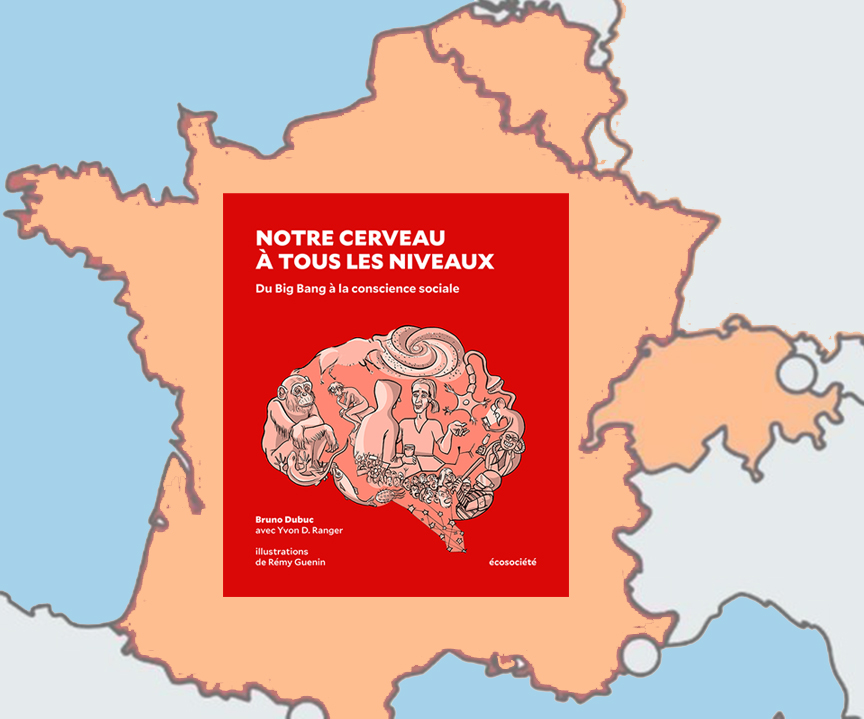Wednesday, 27 November 2024
My book “Notre cerveau à tous les niveaux : Du Big Bang à la conscience sociale” has been launched in Québec and Europe

Back in January 2024, I posted here about one of the central concepts in the book that I was writing about the human brain, entitled Notre cerveau à tous les niveaux : Du Big Bang à la conscience sociale. On October 3, 2024, that book had its Quebec launch. And because my wonderful publisher, Écosociété, also distributes in Europe, as of October 25 you can buy this book in France, Belgium and Switzerland as well, either from bricks-and-mortar French-language bookstores or at the online bookstore Place des libraires.
Many of you have been visiting my website, The Brain From Top to Bottom, for over 20 years and reading my posts on the accompanying blog for the past 14. This new book represents the culmination of all my work over the past two decades, and I am truly thrilled to know that it is now available to readers in Quebec and Europe. (more…)
From the Simple to the Complex | Comments Closed








